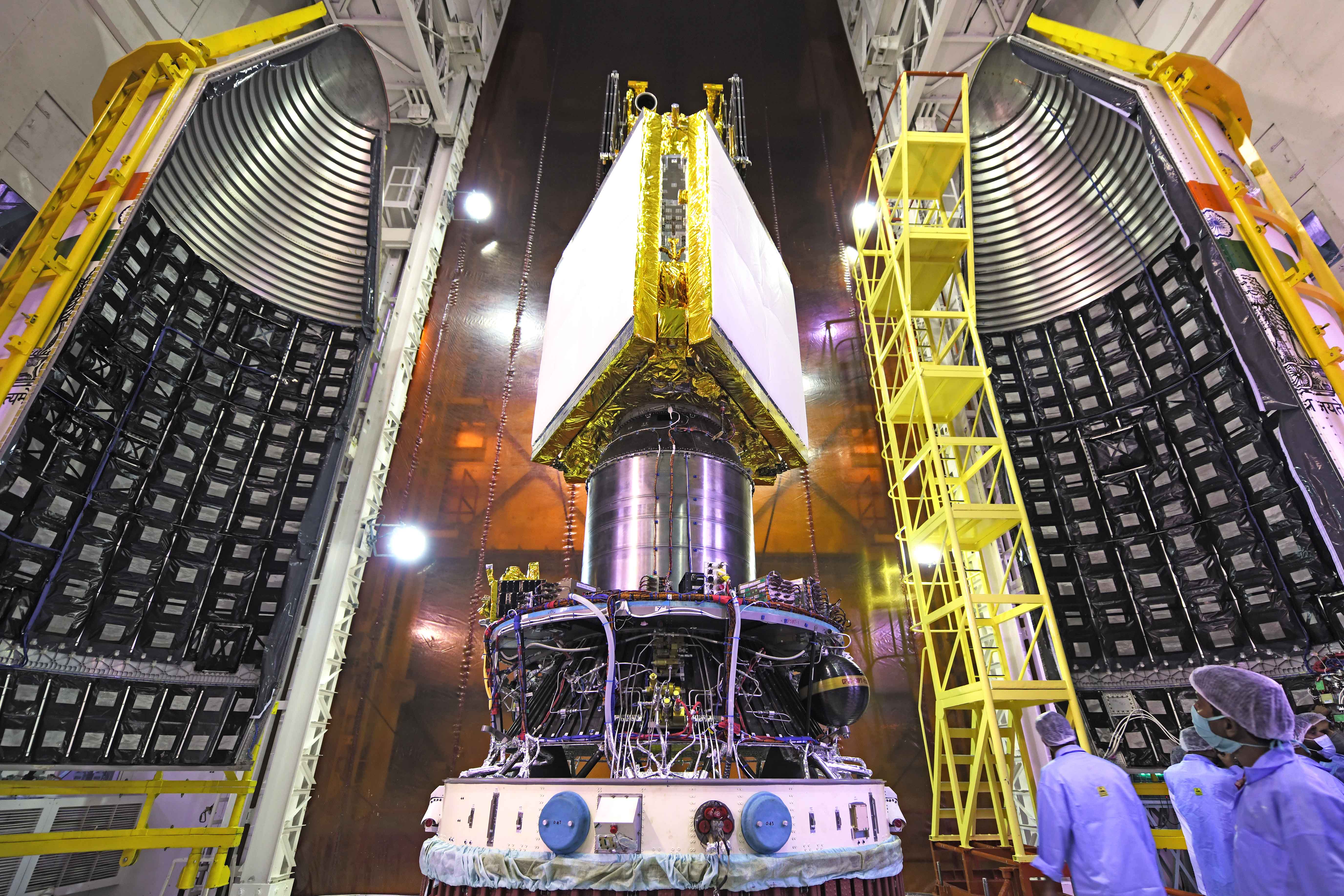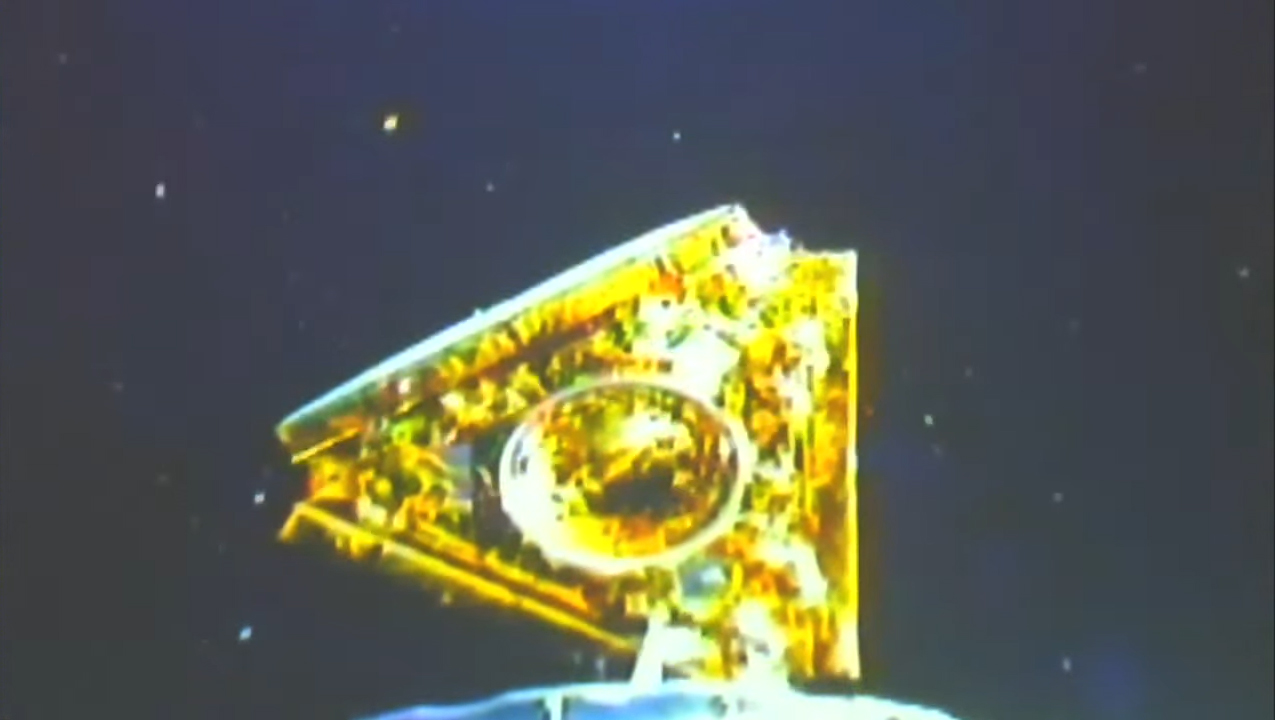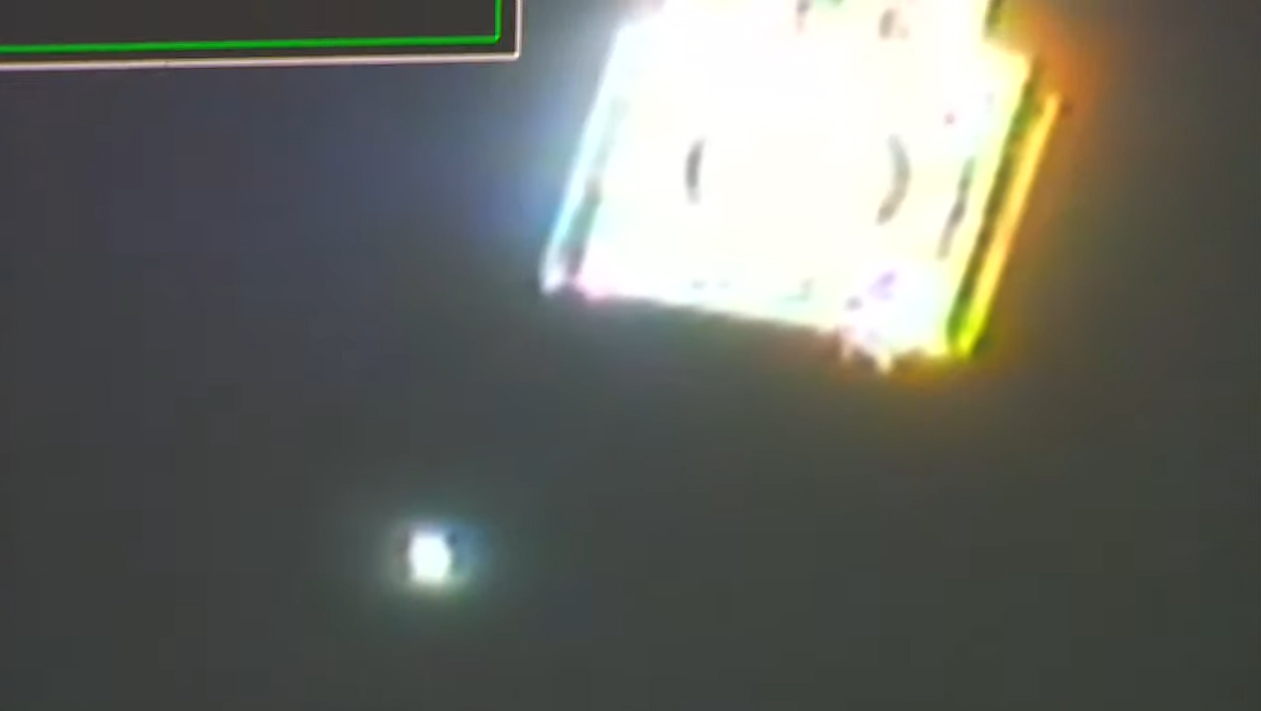India launches Earth-observing satellite and 2 others in first space mission of 2022
The mission's main satellite will observe Earth after a related satellite was lost during launch in 2021.
India launched its first space mission of 2022 late Sunday (Feb. 13) to send a new Earth observation satellite to space alongside two smaller rideshare satellites.
A Polar Satellite Launch Vehicle built by the Indian Space Research Organisation launched the Earth Observation Satellite 4 (EOS-4) into orbit at 7:29 p.m. EST (0029 GMT or 6:29 p.m. local time Monday, Feb. 14) from a pad at the Satish Dhawan Space Centre in Sriharikota, off the Bay of Bengal.
ISRO's s previous launch in this series, EOS-03, suffered a catastrophic failure during liftoff in August 2021. ISRO later said the cause was "a failure to ignite the cryogenic stage of the launch vehicle," according to India's Economic Times. Sunday's launch of the PSLV rocket went off without a hitch.
"The primary satellite EOS-4 has been put in a very precise orbit by the PSLV C52, and along with that the co-passenger satellites INS-2TD and InspireSat-2D have been placed in the right orbit," ISRO's new Chairman S. Somanath said after the launch. "Congratulations to everybody who worked for this mission."
Related: Stunning photos show Earth from India's spacecraft headed to the moon

EOS-03 launched on a Geosynchronous Satellite Launch Vehicle (GSLV) rocket that has yet to fly again since the failure; before the disaster, the heavy-lift GSLV had last launched in 2018, according to ISRO records. Sunday's launch was the first PSLV launch in nearly a year, due to delays caused by the ongoing pandemic, according to Spaceflight Now.
The mission's main payload, EOS-04, was launched into a sun-synchronous polar orbit with an altitude of 329 miles (529 kilometers), according to ISRO. Such an orbit gives consistent lighting to images below the satellite, making it easier to compare features on the ground from one observation to another.
Get the Space.com Newsletter
Breaking space news, the latest updates on rocket launches, skywatching events and more!
Shortly after reaching orbit, the satellite successfully separated from its PSLV rocket upper stage and deployed its solar arrays, ISRO officials said.
"This spacecraft is going to be one of the biggest assets for us to serve the country," Somanath said.

The mission, ISRO added, will "provide high-quality images under all weather conditions for applications such as agriculture, forestry and plantations, soil moisture and hydrology, and flood mapping."
Also on board were two small satellites. The first is student satellite INSPIREsat-1, from the Indian Institute of Space Science & Technology in association with the University of Colorado, Boulder. The mission, according to the university, will perform measurements of a zone of the atmosphere known as the ionosphere, to look at superheated gas (plasma) and other dynamics.


The second is a technology demonstrator satellite (INS-2TD) from ISRO, which is meant to be a precursor to another mission: the India-Bhutan Joint Satellite (INS-2B). ISRO did not provide more details about either satellite on its launch page.
Some additional Indian launches expected to occur this year include the moon lander Chandrayaan-3, a sun-studying mission called Aditya-L1, and another Earth observation satellite called EOS-06 or Oceansat-3, according to the Times of India.
Editor's note: This story was updated at 8:13 p.m. EST with launch images and details on the mission's success.
Follow Elizabeth Howell on Twitter @howellspace. Follow us on Twitter @Spacedotcom or Facebook.
Join our Space Forums to keep talking space on the latest missions, night sky and more! And if you have a news tip, correction or comment, let us know at: community@space.com.

Elizabeth Howell (she/her), Ph.D., was a staff writer in the spaceflight channel between 2022 and 2024 specializing in Canadian space news. She was contributing writer for Space.com for 10 years from 2012 to 2024. Elizabeth's reporting includes multiple exclusives with the White House, leading world coverage about a lost-and-found space tomato on the International Space Station, witnessing five human spaceflight launches on two continents, flying parabolic, working inside a spacesuit, and participating in a simulated Mars mission. Her latest book, "Why Am I Taller?" (ECW Press, 2022) is co-written with astronaut Dave Williams.









